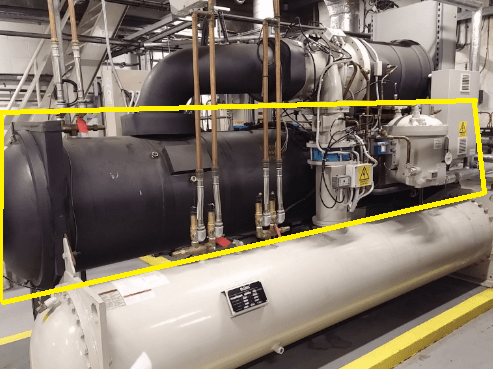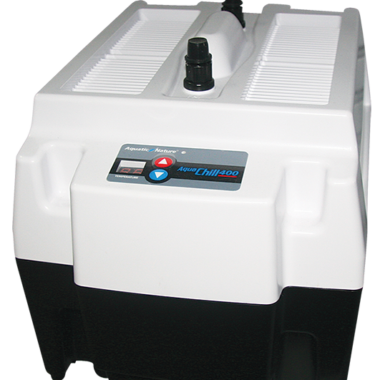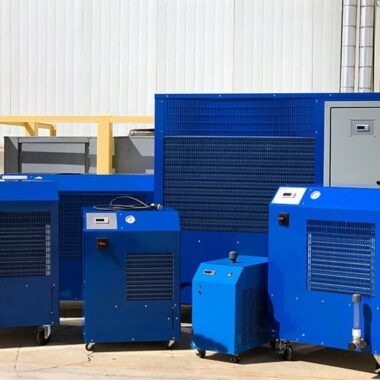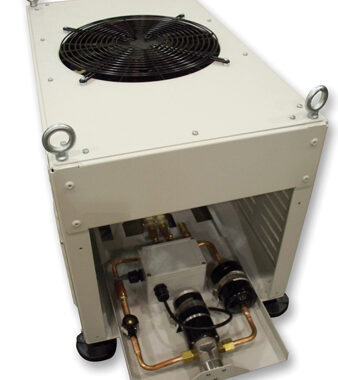Chiller Evaporator
Introduction
Chiller Evaporator plays a crucial role in the overall efficiency of a chiller system, acting as the component where heat is absorbed from the process or space being cooled. The evaporator design influences how effectively the refrigerant absorbs heat, which in turn impacts the cooling capacity and energy efficiency of the system.
Key Factors in Evaporator Design
- Evaporator Type: The two main types of evaporators used in chillers are shell-and-tube evaporators and plate heat exchangers. Shell-and-tube designs are more common in larger systems and industrial applications due to their durability and ability to handle large capacities. Plate heat exchangers, on the other hand, are more compact and offer high efficiency, often used in smaller or modular chiller systems.
- Heat Transfer Surface Area: The design of the evaporator impacts the surface area available for heat transfer. A larger surface area allows for more efficient heat exchange, improving the overall cooling performance of the chiller. Optimizing the heat transfer surface area can enhance efficiency and reduce energy consumption.
- Refrigerant Flow Distribution: Proper distribution of refrigerant throughout the evaporator is essential for maintaining even cooling performance. Uneven flow can lead to “hot spots” and reduced efficiency. Modern evaporator designs incorporate features that improve refrigerant flow distribution, ensuring uniform cooling and optimizing efficiency.
- Material Selection: The choice of materials for the evaporator impacts its thermal conductivity and longevity. High-conductivity materials such as copper or aluminum are commonly used to enhance heat transfer, while corrosion-resistant materials like stainless steel improve durability and lifespan.
- Evaporator Tube Configuration: The internal tube configuration in shell-and-tube evaporators can be optimized for better heat transfer. Turbulators or fins within the tubes can increase turbulence, enhancing the rate of heat exchange and boosting cooling efficiency.
- Heat Transfer Coefficient: The heat transfer coefficient is a measure of how efficiently heat is transferred between the refrigerant and the fluid in the evaporator. Higher heat transfer coefficients mean faster and more efficient cooling. This can be influenced by the type of heat exchanger, the materials used, and the internal geometry of the evaporator.
- Refrigerant Charge: The evaporator design must accommodate the optimal amount of refrigerant for efficient operation. Too much refrigerant can result in inefficient heat transfer and higher operating pressures, while too little refrigerant can cause inadequate cooling and increased energy consumption. Evaporators designed to ensure the correct refrigerant charge are crucial for maintaining system efficiency.
- Pressure Drop Considerations: Pressure drops in the evaporator can lead to reduced performance and increased energy usage. A well-designed evaporator minimizes pressure drops while ensuring optimal flow of refrigerant and cooling fluid. In industrial settings, reducing pressure drops can have a significant impact on energy savings.
- Two-Phase Heat Transfer: The evaporator must handle the two-phase heat transfer process efficiently. As refrigerant moves through the evaporator, it changes from a liquid to a gas (evaporation) by absorbing heat. Managing this phase transition efficiently is critical for maximizing heat absorption and cooling capacity. Advanced designs enhance this process through better surface geometry and fluid management techniques.
- Flooded vs. Dry-Type Evaporators:
- Flooded evaporators are more efficient as they ensure full utilization of the heat transfer surface by maintaining the tubes completely submerged in liquid refrigerant. These are typically used in larger systems where efficiency is paramount.
- Dry-type evaporators, on the other hand, are used in smaller systems. They involve refrigerant flowing through the tubes without completely flooding them. Although less efficient, they are simpler and more cost-effective for certain applications.
- Energy Recovery Capabilities: Some modern evaporators are designed to integrate with energy recovery systems, where the heat absorbed by the refrigerant can be repurposed for other processes. This can be beneficial in industries that have simultaneous heating and cooling needs, resulting in lower overall energy costs.
- Capacity Modulation: Chiller Evaporator with variable-capacity evaporators can adjust the amount of refrigerant being used based on the cooling load. This feature allows for more precise control of the cooling output and helps maintain high efficiency even during partial load conditions, which is crucial in industries where cooling demand fluctuates.
Conclusion
A well-designed evaporator is a key component that directly influences a chiller Evaporator cooling efficiency, performance, and operational costs. By considering factors such as heat transfer efficiency, refrigerant flow management, material selection, and advanced technologies like microchannels and smart controls, chiller systems can significantly improve their energy consumption, cooling capacity, and reliability.






